
6 Dos and Don’ts of Ordering Oysters, According to Pro Shuckers
What to know before you slurp.
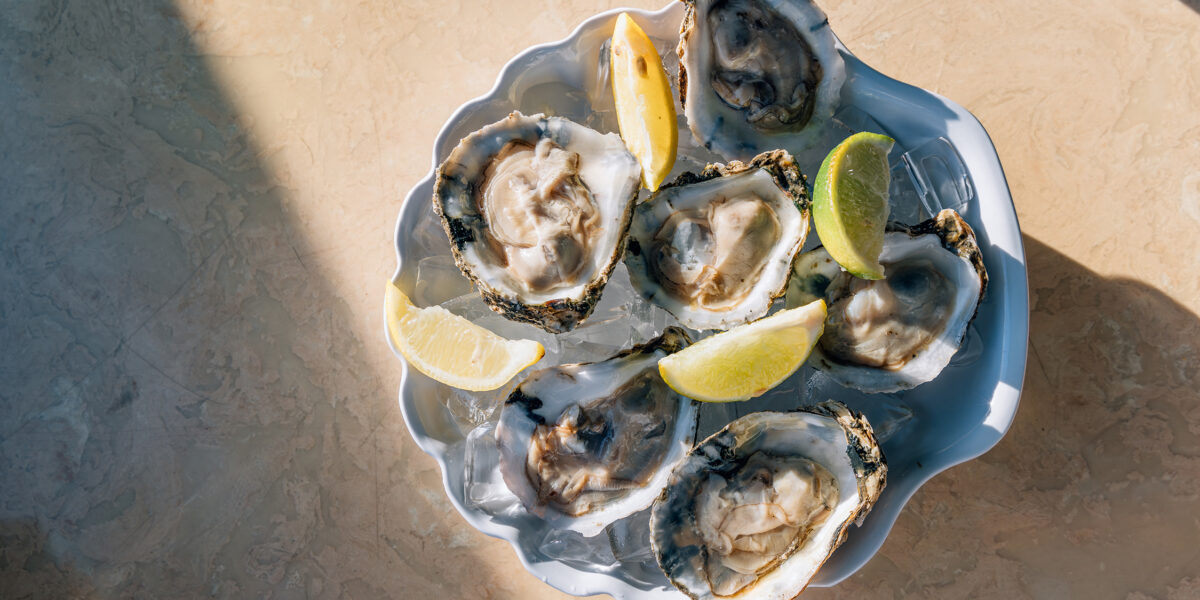
Alexander Spatari/Getty Images
Savory, salty, and downright slurpable, very few bites can beat a dozen oysters served on the half shell. Although chowing down on oysters is a dream for most seafood lovers, it should be done with care. At the risk of sounding dramatic, one false slurp can leave you with a nasty case of food poisoning. (According to the Centers for Disease Control and Prevention, approximately 80,000 people get a food-borne illness called vibriosis every year, which is often caused by eating bad oysters.)
But don’t let that scary statistic make you skeptical of your next slurp. Knowledge is power, which is exactly why we tapped three shucking savants to share the dos and don’ts of ordering oysters. Thanks to the helpful tips below, you can order your next batch with confidence—not a tinge of concern.
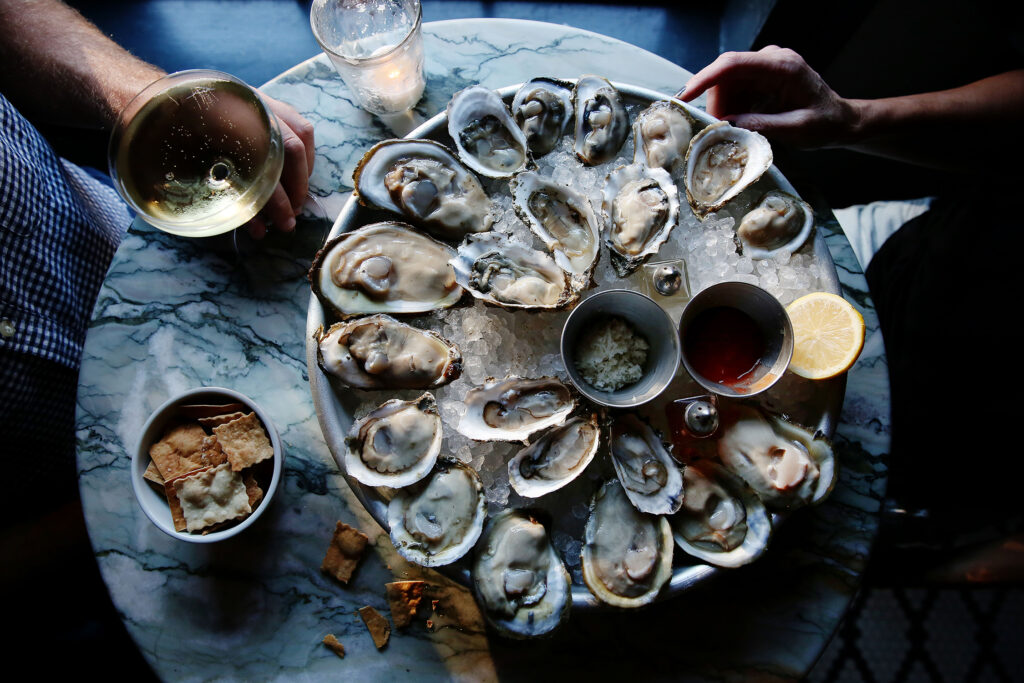
Marianna Massey / Getty Images
Do: Know the Difference
Oysters come in a breadth of shapes, sizes, and flavor profiles, but in the United States, they can generally be categorized into “West Coast” and “East Coast.” So what’s the difference? Well, for starters, their appearance. According to Danny Pirello–owner of The Salty Pearl in Oakland, California—West Coast oysters have deeper cups with beveled edges whereas its East Coast counterparts have a rougher shell.
“I think West Coast oysters are delicious because they have a distinct deep cupped shape that allows them to hold more seawater and this enhances their minerality,” says Luc Chamberland, owner of Saltwater Oyster Depot in Inverness, California. Plus, Pirello says, East Coast oysters taste briny, while West Coast options have a more melon-forward profile. Once you find the coast that suits your palate, you can pair your oysters with a bunch of accouterments like hot sauce or mignonette sauce. They “should always be fresh and simple,” Chamberland says. “My nod goes to lemon juice and freshly grated horseradish.”
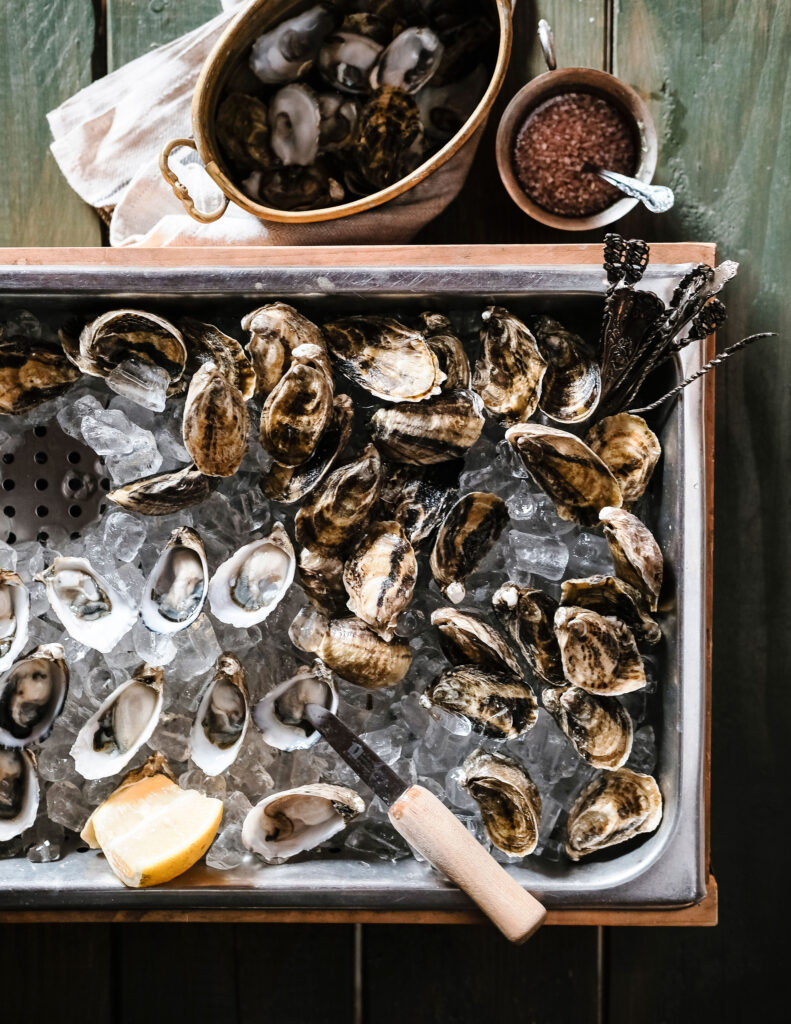
Thomas J. Story
Don’t: Be Discouraged by Location
Mouth-watering mollusks are just as good as the restaurant you order them from, so it’s important to do your research and order oysters at restaurants that are known for seafood. “If a restaurant has a person designated just to shuck oysters, that’s also a sign they value quality and know what they’re doing,” says Lauren Kiino, culinary director at Hog Island Oyster Co. on Tomales Bay in California.
But are there physical regions that are best (and worst) for ordering oysters? Well, it depends. While Kiino says restaurants that are located in oyster growing areas are likely to serve high-quality fresh and local products, Pirello argues it’s now possible to get “really fresh oysters anywhere.”
“A lot of times I can get fresh oysters from New England that are [shipped] overnight that were harvested the day before,” he says.
Regardless of where you are eating (or where your oysters came from), both pros agree that storage is the most important factor to consider. “Food-borne illness caused by oysters has a lot to do with improper storage, where oysters go in and out of temperature control,” Kiino says. “You need to trust that the oysters have been handled properly from harvest, shipping, and at the restaurant.” She adds that Hog Island Oyster Co. employees regularly visit its oyster partners to ensure batches are kept cold during the entire process.
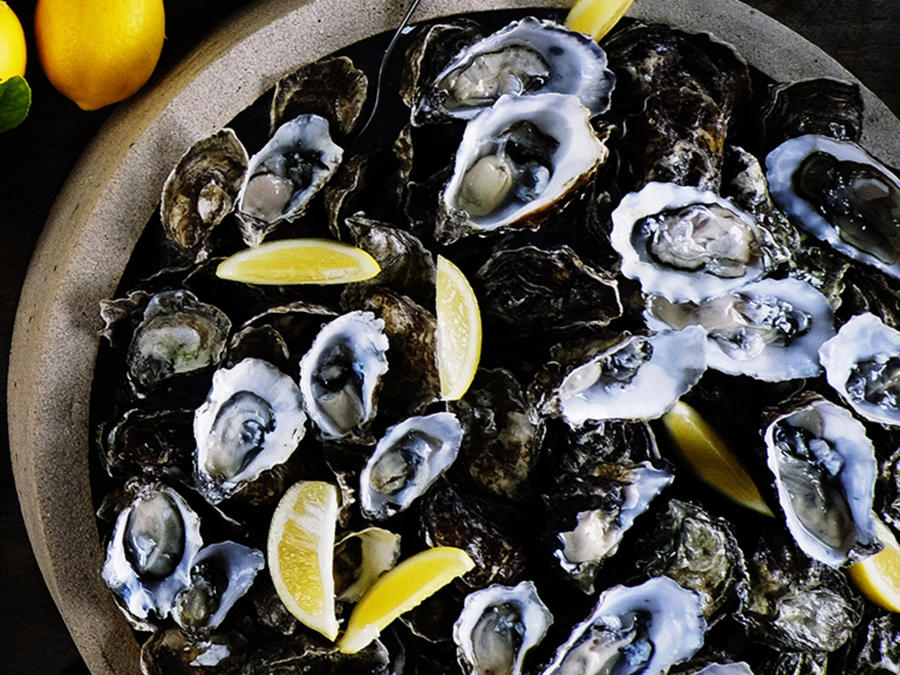
Thomas J. Story
Do: Inspect Your Oyster
We know it can be so tempting to down a dozen oysters the moment they’re placed at your table, but it’s a good idea to give them a quick once-over first. For Pirello—who trains his employees on the art of a clean shuck—an oyster’s shell and meat should look pristine and professional.
“There’s nothing worse than slurping down an oyster and getting a piece of shell in your mouth,” he says. “If they’re shucking it fast and aggressively, then they’ll puncture the oyster and they’ll cut through it with their shucking knife, creating what we call ‘scrambled’ oysters.”
He has a point: If an oyster is sloppily shucked or appears “scrambled,” how can you be so sure that it was stored properly? Speaking of telltale signs, Kiino says it’s a good idea to give your order a quick whiff. “Shucked oysters should smell lightly of the sea,” she adds. “Not strong, fishy or otherwise off; they should appear juicy and plump.”
Don’t: Eat Raw Oysters That Aren’t Served on Ice
While oysters served on rock salt or a bed of seaweed might look nice, Pirello says those setups are culinary red flags. “Who wants to eat a room-temperature oyster?” he asks. “If you’re eating ’em on the half shell, they should be ripping cold and if you’re eating ’em cooked or barbecued, they should be hot and fully cooked.” When in doubt, Pirello says, raw oysters should always be served on ice.
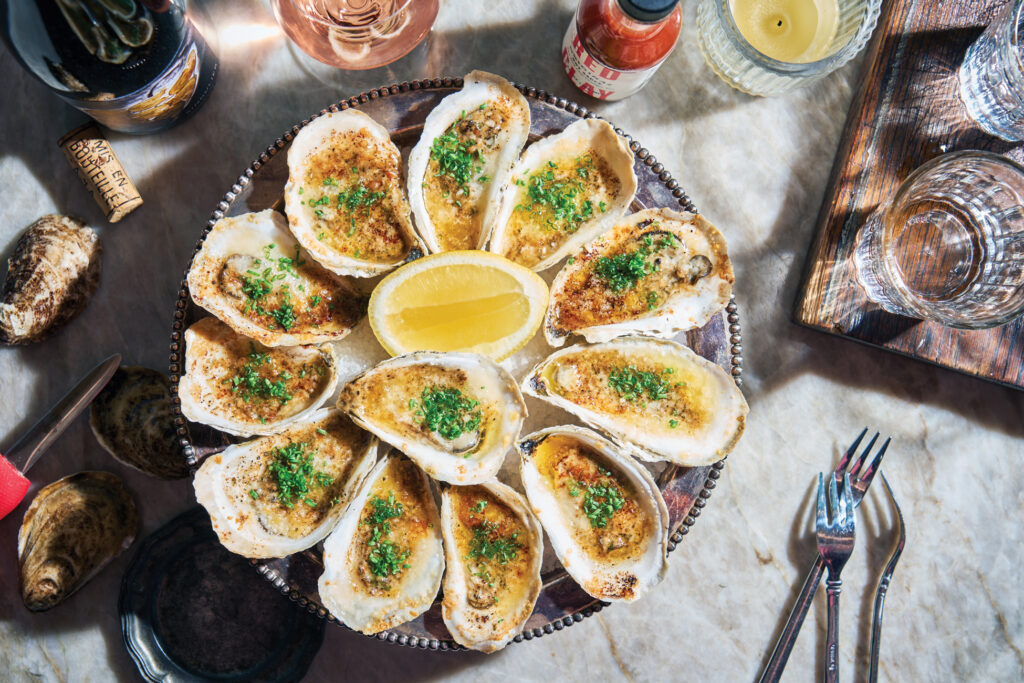
Thomas J. Story
Do: Ask About the Oysters
If you’re not used to ordering raw seafood, the mere thought of slurping down some oysters might be a little nerve-wracking. Don’t worry: Your servers are not only here to help answer any questions you might have. In fact, oysters are always shipped with a tag that shows the grower, harvest date, and shipping date. “Never hurts to ask the restaurant staff where they are getting the oysters,” Kiino adds. “If they can’t answer, then it’s probably not a good idea to partake.”
Don’t: Forget to Dispose of Your Shells Properly
You’ve asked your questions, ordered a dozen West (or East!) Coast oysters, and devoured that briny goodness… now what? Flip your now-empty shell over and place it back on the plate it was served on. “The thing that people do all the time that kind of drives us crazy is they eat their oysters and keep their shells on a little plate on their own little plate,” says Pirello. “It makes it harder for us to know when you’re done with your oysters and clear the table.” The sooner your waitstaff knows you’re done with your first dozen oysters, the sooner you can order your next. Bon appétit!
